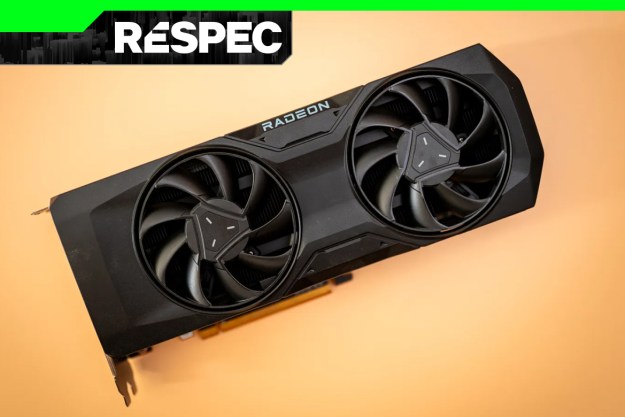AMD is releasing a limited-edition, Starfield-themed version of its RX 7900 XTX graphics card (which currently sits on top of our ranking of the best graphics cards). Unfortunately, you won’t be able to buy it.
The company is only making 500 of the exclusive GPUs, and it says you’ll be able to win one through “special promotions and giveaways from AMD, Bethesda Softworks, and partners.” This is a result of AMD’s partnership with Bethesda, in which AMD says it’s the “exclusive PC partner” for Starfield.
Although it comes with a different finish, the Starfield RX 7900 XTX is identical to the base model of the graphics card. As you can read in our RX 7900 XTX review, it offers performance that’s competitive with the RTX 4080, though it falls behind when you turn on ray tracing. Starfield‘s official system requirements only call for an RX 7900 XT for 4K gaming, so the flagship XTX model should hold up.
In addition to the GPU, AMD is making 500 Ryzen 7 7800X3D CPUs with limited-edition Starfield packaging. It’s not quite as much of a collector’s item as the
AMD and Bethesda’s partnership has been the center of some controversy. The game will support AMD’s FidelityFX Super Resolution 2 (FSR 2), but it doesn’t appear it will support Nvidia’s Deep Learning Super Sampling (DLSS). That’s left some Nvidia users upset, speculating that the partnership could have blocked Nvidia’s tech from being in the game.
Starfield is set to launch on September 6, with five days of early access granted to players who purchase the deluxe version of the game. AMD is currently running a promotion that bundles a copy of the game with select RX 7000 and Ryzen 7000 GPUs and CPUs.
Editors' Recommendations
- AMD’s canceled GPU could have crushed Nvidia
- Gigabyte just confirmed AMD’s Ryzen 9000 CPUs
- I tested Intel’s XeSS against AMD FSR — and the results speak for themselves
- I’ve reviewed every AMD and Nvidia GPU this generation — here’s how the two companies stack up
- Don’t buy a cheap GPU in 2024




